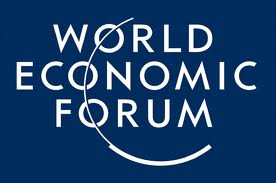 The World Economic Forum’s first Inclusive Growth and Development Report presents a new framework for assessing countries’ efforts to foster economic growth that raises the living standards of entire societies
The World Economic Forum’s first Inclusive Growth and Development Report presents a new framework for assessing countries’ efforts to foster economic growth that raises the living standards of entire societies- Report says that all countries are failing to exploit opportunities to reduce income inequality without harming growth
- Purpose of the report is to help further the debate on inequality from problem identification to action by identifying a wider range of policy options to drive socially inclusive growth
- Access the report, data and supporting material here
Geneva, Switzerland, 7 September 2015 – Amid increasing concerns about rising income inequality and its negative economic and social impact, the World Economic Forum, the international institution for public-private cooperation, today publishes a new contribution to the discussion. In its first edition, The Inclusive Growth and Development Report 2015 provides a new framework for stimulating growth that translates into broad-based improvements in living standards, touching all citizens.
Around the world, no bigger policy challenge preoccupies political leaders than expanding social participation in the process and benefits of economic growth. The report, which covers 112 economies, seeks to improve our understanding of how countries can use a diverse spectrum of policy incentives and institutional mechanisms to make economic growth more socially inclusive without dampening incentives to work, save and invest.
The new benchmarking framework introduces over 140 quantitative indicators across seven pillars and 15 sub-pillars:
- Education and Skills Development – access; quality; equity
- Employment and Labour Compensation – productive employment; wage and non-wage labour compensation
- Asset-building and Entrepreneurship – small business ownership; home and financial asset ownership
- Financial Intermediation of Real Economy Investment – financial system inclusion; intermediation of business investment
- Corruption and Rents – business and political ethics; concentration of rents
- Basic Services and Infrastructure – basic infrastructure; health-related services and infrastructure
- Fiscal transfers – tax code; social protection
The online report includes comparative country profiles for 112 countries. These are like diagnostic scans of each country’s institutional enabling environment as it relates to social inclusion. Countries are able to benchmark their efforts to promote social inclusion relative to peers in each area via a traffic-light scheme. To enable more meaningful comparisons, countries are divided into four groups: advanced; upper-middle income; lower-middle income; and lower-income.

Rick Samans, Member of the Managing Board of the World Economic Forum, said: “By giving policy-makers, business leaders and other stakeholders a clearer sense of the extent to which their country is exploiting the available policy space and best practices in relation to its peers, the report aims to make discussions about inequality less about aspiration and more about concrete action.”
Overall, six main findings emerge from the analysis:
- All countries have room for improvement. There is considerable diversity in performance not only across but also within countries. No country scores above average for its peer group in all 15 sub-pillars and only a few come close.
- It is possible to be pro-inclusiveness and pro-growth at the same time. This is demonstrated, for example, by the fact that several of the strongest performers in the Forum’s Global Competitiveness Index also have a relatively strong inclusive growth and development profile.
- Fiscal transfers can be helpful – but so can other policies. Many economies with high levels of tax and redistribution are highly competitive. However, use of policy space in other areas could reduce the need for these levers.
- Effective promotion of social inclusion is not solely a luxury of high-income countries. In many sub-pillars – such as business and political ethics, financial system inclusion, and educational quality and equity – some developing countries do better than others with much higher incomes.
- There are significant regional similarities. This suggests a strong role of shared culture, historical traditions or political-economy reflexes, in areas such as tax systems in Eastern Europe and educational equity in Latin America.
- The current debate on inequality is unduly narrow and polemical. The debate usually focuses on redistribution and upskilling labour, but these are only a minority of the policy options available to “structurally adjust” an economy for inclusive growth. Several other crucial factors relate to improving the investment and business climate. Therefore, it is possible, even necessary, to be pro-labour and pro-business; pro-growth as well as pro-equity.
“The most appropriate approach to be taken by countries will depend on their specific circumstances. However, our analysis shows that all countries have room for improvement for placing their economies on a more inclusive growth path,” said Jennifer Blanke, Chief Economist at the World Economic Forum.
Global Challenge Initiative on Economic Growth and Social Inclusion
This report is a key contribution to the World Economic Forum’s Global Challenge Initiative on Economic Growth and Social Inclusion. The initiative brings together global leaders and decision-makers in addressing this issue through global and regional dialogues as well as projects aimed at making progress in specific areas.
